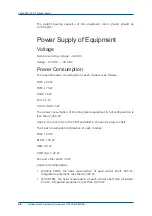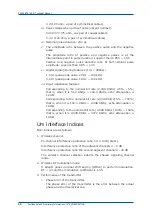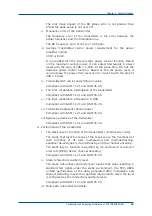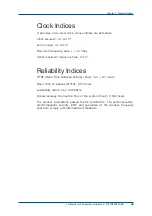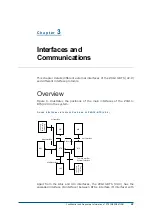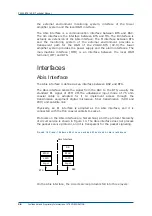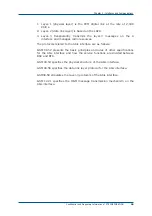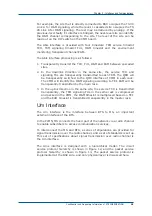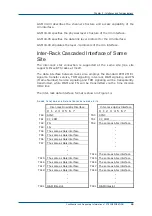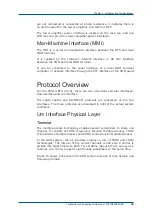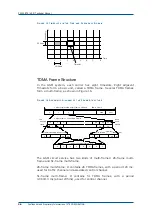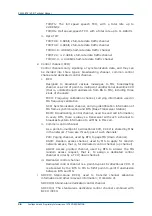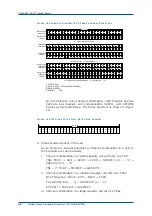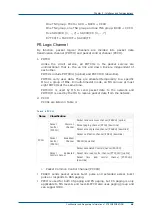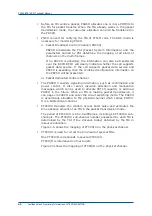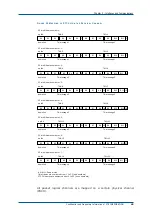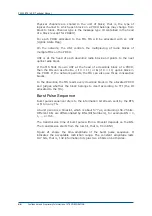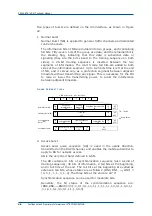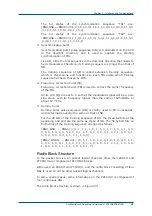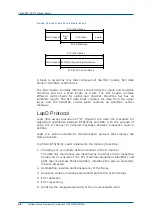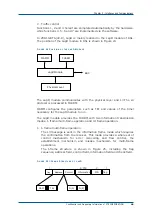
ZXG10-BTS (V2.9) Technical Manual
34
Confidential and Proprietary Information of ZTE CORPORATION
After CMM is powered on, it reads the ID signal to locate the position of
the O&M TS. The master rack generates and outputs FN and SYNCLK while
the slave rack receives them. The rack category is read by the CMM from
the rack top ID signal.
The inter-rack FN will be transmitted and broadcasted via the HDLC
protocol, the inter-rack O&M TS via the HDLC protocol and inter-rack
communication (CC_COM) via the HDLC protocol. Details are introduced as
follows:
In the downlink direction, the CMM will transparently switch the O&M
timeslot of the Abis interface to the processor of this board and other
racks of the same site. The CMM will identify the O&M according to TEI.
In the uplink direction, CMM compresses the O&M TSs of this rack and the
next rack to send to the upper-level CMM. Thus, the master rack
compresses the O&M messages of three racks into one O&M message for
reporting to the BSC.
Interface with External Environment
Monitoring System
The external environment monitoring equipment provides two types of
interfaces: One is in the serial port communication mode based on RS232,
and the other is in the communication mode that directly reflects the
alarm status in the backbone node mode.
The DB25 pin socket is adopted at the rack top of the ZXG10-BTS (V2.9)
to access the backbone node alarm status signal. The CMM can collect 10
pairs of backbone nodes for input and provide two pairs of backbone nodes
for output in the ZXG10-BTS (V2.9).
In addition, it provides one RS232 interface at the top of the ZXG10-BTS
(V2.9), which acts as an EAM transparent path to BSC for external
environment monitoring equipment.
Interfaces of Tower Amplifier System
During installation of the tower amplifier for BTS, the interfaces of the
tower amplifier system should be reserved, including the tower amplifier
power interface and the tower amplifier alarm interface. In general, they
are interfaces for providing the DC feed and alarm monitoring, and the
alarm is detected from the DC current.
BTS can p12 V power supply and up to 300 mA current for the
tower amplifier system via the power interface.
The tower amplifier alarm is accessed to the backbone node in the BTS
through the backbone node alarm mode, and it is monitored by the BTS.
When two lines of the backbone node in BTS are connected or connected
at a low resistance, it indicates there is alarm output for the tower
amplifier, and Alarm is ON. When two lines of the backbone node in BTS
Summary of Contents for ZXG10-BTS
Page 4: ...This page is intentionally blank ...
Page 8: ...Figures 121 Tables 123 ...
Page 9: ...This page is intentionally blank ...
Page 10: ......

